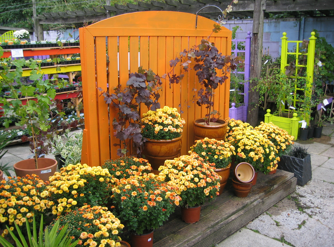
 Sept. 3, 2009 – The general consensus in society is that, the bigger the better. I had the impression that size affects the consumer experience and the larger the size the better the experience. Over the last few years I have started to question this theory. I’m convinced small is beautiful and more profitable.
Sept. 3, 2009 – The general consensus in society is that, the bigger the better. I had the impression that size affects the consumer experience and the larger the size the better the experience. Over the last few years I have started to question this theory. I’m convinced small is beautiful and more profitable.

|
|
There always seems to be a debate on does size matter. The general consensus in society is that it does, and the bigger the better. As a result marketers tend to promote based on size and I had the impression that size affects the consumer experience and the larger the size the better the experience.
Over the last few years I have started to question this theory. I’m convinced small is beautiful and more profitable.
During the boom times the trend was to develop large outdoor retail space for selling plants; many retailers around the world would boast they had the largest outdoor retail area. Many would argue that they had the space and it was a low capital investment, compared to indoor retail space, so why not build large outdoor retail complexes to sell plants.
What was often not included in the calculations was the extra husbandry costs to look after more plants. This would often increase as the larger the plant area, the lower the stock turn.
I have recently been studying a number of garden centres in the same geographic zone and it has become very evident that size does matter when it comes to return on investment.
Land has always been more expensive in urban areas, therefore the tendency has been to build smaller plant areas in urban locations and larger retail plan sales areas in rural areas.
The argument has often been that on a larger retail block, you can buy a larger volume and therefore get a better price for the plants and have them when you need them. But, this bigger purchase often results in a lower stock turn per square metre/foot of retail space and I’m not convinced that the equation works in favour of the retailer.
Just In Time
Retailers who adopt a “Just In Time” approach when they have a reliable supplier are the ones that maximize the return of their investment. The “Just In Time” concept started in the manufacturing industries and was then adapted by the supermarkets. The theory is that you buy enough product to meet your customers needs over a relatively short time frame and then reorder just before you sell the last units.
This means you maximize the use of available selling space and the “storage” cost is the responsibility of the supplier rather than the retailer. In the ideal scenario it is a “win: win” for everyone in the supply chain.
With many wholesalers adopting a weekly supply, this means the retailer only needs to hold enough plants to keep the nursery stocked up for a relatively short time. Regular deliveries mean plants look fresher and the stock turn increases. As long as you maintain your gross profit and increase your stock turn this is a winning formulae.
Part of this scenario is that you now need a smaller outdoor plant area to achieve the same financial reward.
But We Supply Range
Many retailers who have larger plant areas will argue that this is needed to ensure they can provide a wider range of plants for the consumer. I agree that the width and depth of range is critically important to maintaining the integrity of the plant area as a place of specialism. But, we also need to consider how many units of each product we need to stock to maintain that image.
I was recently working with a garden centre that had over 50 units of a particular plant species on a bench that was out of season. I was told that the supplier would deliver every two weeks and that as a retailer they were lucky to sell three plants a week of this species. I often came across situations like this. When money was more freely available this may have been a retail buying option, in today’s economic world I think it’s a bad retail practice.
Yes we need width and depth, but we need also to introduce minimum and maximum holding figures into the equation as well.
How Much Are You Generating in Your Plant Sales Area?
Some of the larger outdoor retail plant areas that I have studied are generating $300 a square metre, compare that with smaller units that are generating $3000 a square metre. A tenfold increase.
I realize that these figures cannot be solely put down to a difference in size. The local demographics, management practices, merchandise and display strategies, pricing procedures and selling skills will all be factors in how well the outdoor retail area is performing.
But, having said that, I still believe we could look at many outdoor plant retail areas and reduce the size, enhance the customer experience and increase profitability.
Size does matter, it’s worth thinking about. Perhaps you’re too big for today’s market.
John Stanley is a retail business coach, consultant, speaker and
author. His specialist areas are customer focused layout, customer
focused merchandising, customer focused marketing and branding, and
customer focused selling and service. Email John at john@johnstanley.cc
or visit his website www.johnstanley.cc.
Print this page